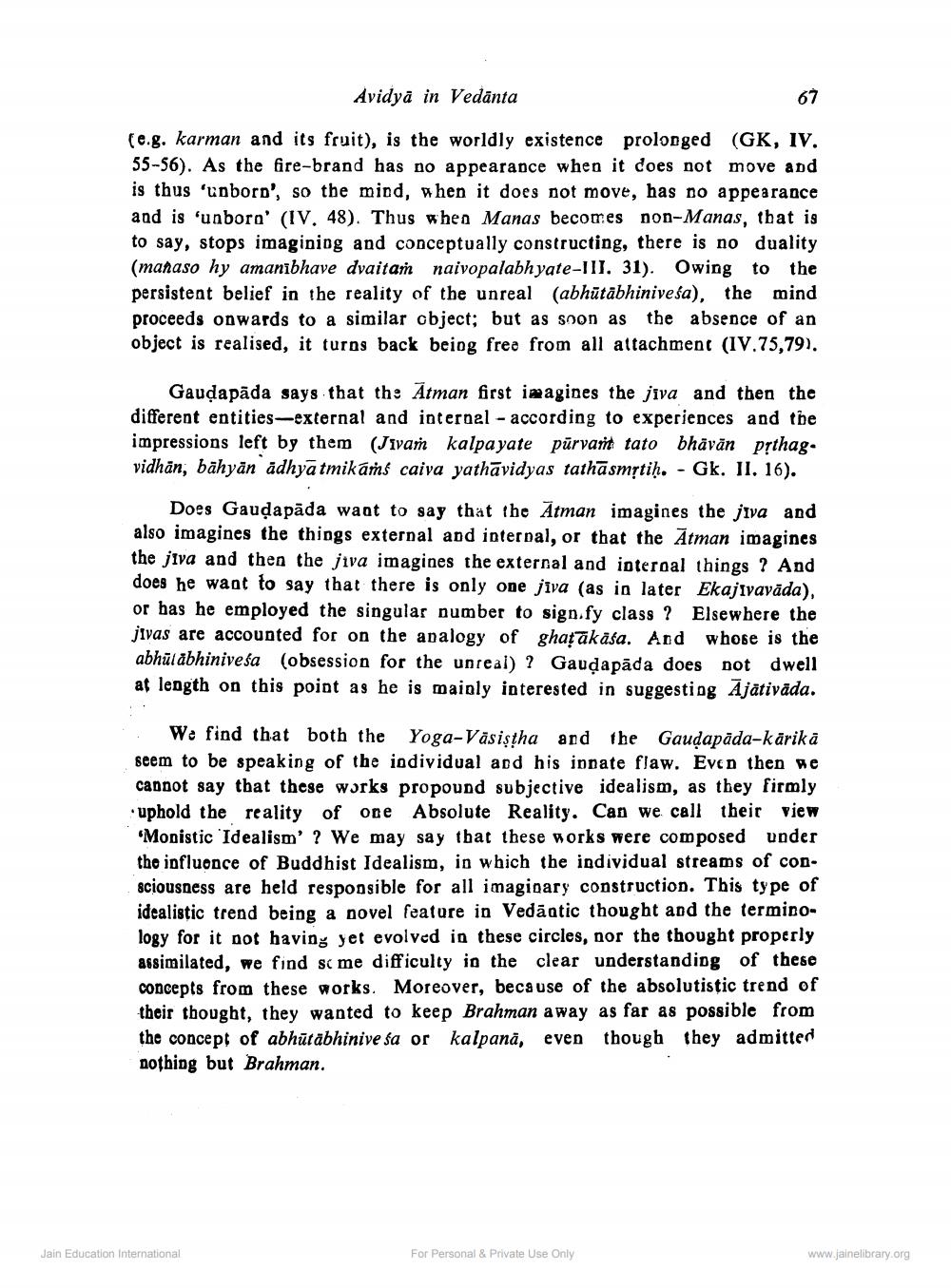________________
Avidyā in Vedanta
(e.g. karman and its fruit), is the worldly existence prolonged (GK, IV. 55-56). As the fire-brand has no appearance when it does not move and is thus 'unborn', so the mind, when it does not move, has no appearance and is ‘unboro' (IV. 48). Thus when Manas becomes non-Manas, that is to say, stops imagining and conceptually constructing, there is no duality (mahaso hy amanībhave dvaitań naivopalabhyate-II], 31). Owing to the persistent belief in the reality of the unreal (abhūtābhiniveśa), the mind proceeds onwards to a similar object; but as soon as the absence of an object is realised, it turns back beiog free from all attachment (IV.75,79).
Gaudapāda says that the Atman first imagines the jiva and then the different entities-external and internal - according to experiences and the impressions left by them (Jivam kalpa yate pūrvant tato bhävän pệthag. vidhān, bāhyān adhyā tmikams caiva yathāvidyas tathāsmộtiḥ. - Gk. II. 16).
Does Gaudapāda want to say that the Atman imagines the jiva and also imagines the things external and internal, or that the Atman imagines the jiva and then the jiva imagines the external and internal things ? And does he want to say that there is only one jiva (as in later Ekajivavāda), or has he employed the singular number to sign.fy class ? Elsewhere the jivas are accounted for on the analogy of ghațākasa. And whose is the abhūlābhiniveśa (obsession for the unreal) ? Gaudapāda does not dwell at length on this point as he is mainly interested in suggesting Ajätivada.
We find that both the Yoga-Väsiştha and the Gaudapāda-kärikā seem to be speaking of the individual and his innate flaw. Even then we cannot say that these works propound subjective idealism, as they firmly uphold the reality of one Absolute Reality. Can we call their view 'Monistic Idealism' ? We may say that these works were composed under the influence of Buddhist Idealism, in which the individual streams of consciousness are held responsible for all imagioary construction. This type of idealistic trend being a novel feature in Vedāntic thought and the terminology for it not having yet evolved in these circles, nor the thought properly assimilated, we find some difficulty in the clear understanding of these concepts from these works. Moreover, because of the absolutistic trend of their thought, they wanted to keep Brahman away as far as possible from the concept of abhūtabhinive sa or kalpanā, even though they admitted nothing but Brahman.
Jain Education International
For Personal & Private Use Only
www.jainelibrary.org




